medium | In the late 1940’s and early 50’s, Karl Pribram, a neuroscientist, performed defining neuro-behavioural experiments that established the underlying structure of the executive functions of the prefrontal cortex and the limbic system.
In essence, the neural architectures of thought and feeling.
Additionally, he discovered that the sensory-specific association cortex of the parietal and temporal lobes, where associations are made between the body’s senses in real-time, “operate to organize the choices we make among sensory stimuli, and not the sensing of the stimuli themselves.”
But what Pribram is best known for is holonomic brain theory, which describes human cognition by modeling the brain as a holographic storage network, with consciousness being shaped by the quantum effects occurring within and between brain cells.
In 1975, Pribram was inspired by the work of Bohm who had noted that the universe would look like a hologram to us if we did not have the use of lenses.
Building on this insight, Pribram concluded that our view of the world would be a hologram — a diffuse scattering of the interference patterns of electromagnetic waves — if not for the lenses of our eyes.
And that the neural processes of perception are formed by several stages of transformation, each stage having its roots in quantum mechanics.
In a famous collaboration with Bohm that followed, Pribram laid the foundation for a quantum theory of consciousness, connecting Bohm’s theory of holomovment with the mathematics of holography and neuroscience.
Pribram hypothesized that memory takes the form of interference patterns similar to those of holograms produced by a laser.
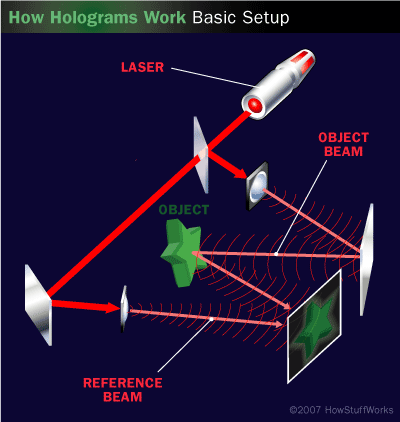
Pribram suggested that cognition involved electrical oscillations in the delicate fibers of the dendritic web, which are different from the more commonly known action potentials of axons and synapses.
In other words, the space between the neurons — and not the neurons themselves —was responsible for consciousness.
Pribram hypothesized that the fluctuations of brainwaves riding on gray matter, glial cells, and the synapto-dendritic web “create interference patterns in which memory is encoded naturally, and the waves may be analyzed by a Fourier transform.”
And remember, with a hologram, any part of it with sufficient size contains the whole of the stored information.
In this theory, a piece of a long-term memory is similarly distributed over a dendritic arbor so that each part of the dendritic network contains all the information stored over the entire network.
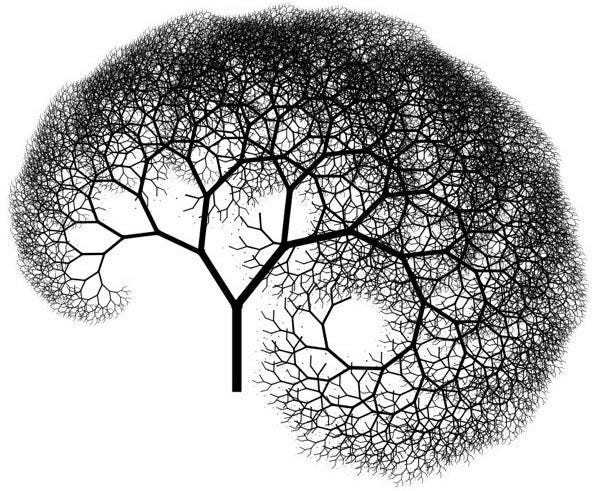
This structuring of the brain provides the capability of responding to stimuli without specialized and constrained paths of nerve conduction.
Instead, the brain operates as a general purpose computer with built-in redundancy, each part receiving information about the whole and performing a specific computation on it — at all scales.
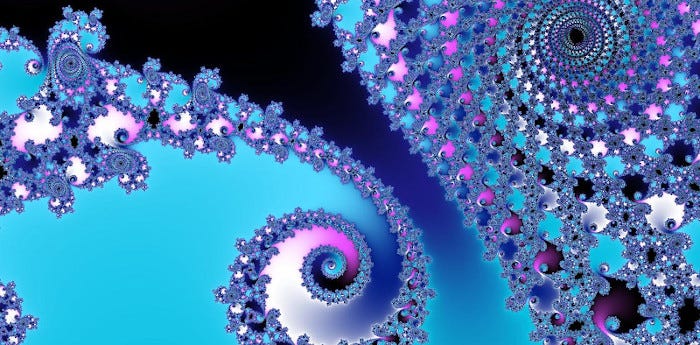
Like many structures found in nature, the brain’s architecture is fractal. And perhaps it follows that the algorithm is as well. Consciousness itself.
In this model, consciousness is expressed by a Fourier transform between the frequency and space-time domains of reality. It’s what reveals the available degrees of freedom with respect to the past and the future —in essence, it’s a function to decide what to pay attention to.
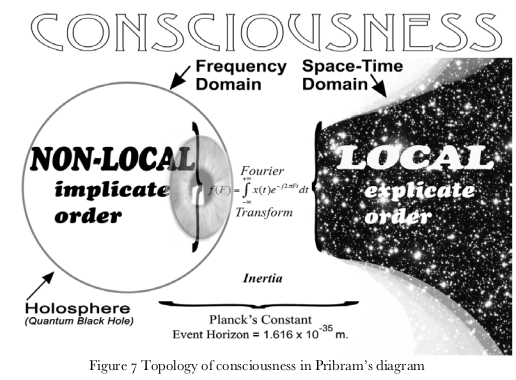
But ultimately, consciousness is really the platform for making a choice. A multi-dimensional awareness of and response to the environment. The basis for an informed decision, at any scale.
Perception, then, is the re-construction of the hologram, a momentary collapse of the wave-function into an explicate order. The filtering and focusing of attention predicated on the past and future.
Perception is the simulation.
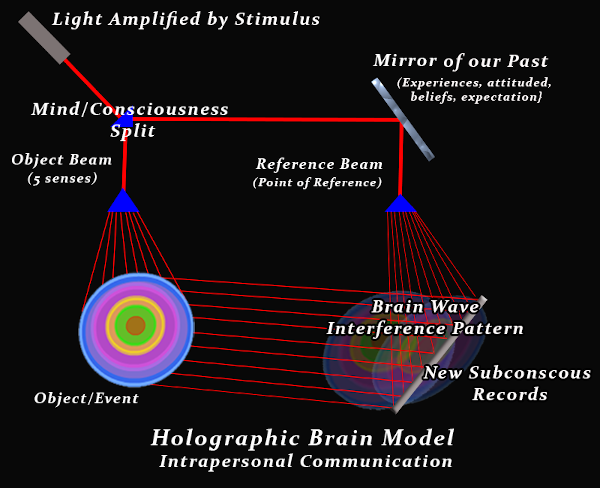
The electrical signals of the nervous system are the read-write interface to the hologram. And consciousness is what illuminates the choices available now, in the present — focusing our attention — distorted and myopic as it may be.
Holographic Associative Memory
In the typical operation of holograms, we shine a reference beam on a holographic film to re-construct the visual image of the object beam, thereby observing a virtual image in the reflected light.
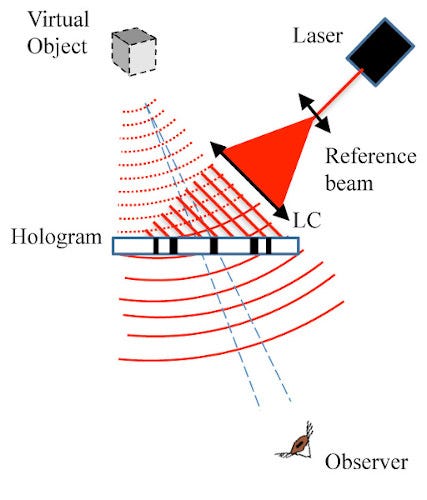
And in theory, we can also reverse the procedure, using the object beam to illuminate the hologram, re-creating the original reference beam.
The light itself.
In this dual mode of operation, a holographic associative memory —HAM, for short— is a form of data storage where information from the object beam and reference beam can be saved and retrieved by associating them with one another in interference patterns. Each part of the pattern contains them both, and each can be used to retrieve the other.
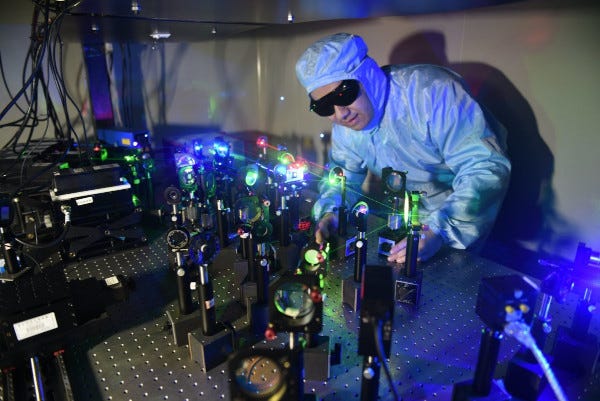
In other words, a hologram with a read-write interface.
HAM is part of the family of analog, correlation-based, associative, stimulus-response memories, where information is mapped onto the phase orientation of complex numbers operating on a Riemann surface.
It can be considered as a complex valued artificial neural network.
The HAM also exhibits some remarkable characteristics, as it has been shown to be effective for associative memory tasks, generalization, and pattern recognition with changeable attention.
And the ability of dynamic search localization is central to natural memory. For example, in visual perception, humans always tend to focus on some specific objects in a pattern. Humans can effortlessly change the focus from object to object without requiring relearning.
HAM provides a computational model which can mimic this ability by creating a representation for focus
Principles of Operation
- Stimulus-response associations are both learned and expressed in one non-iterative transformation. No backpropagation of error terms or iterative processing required.
- The method forms a non-connectionist model in which the ability to superimpose a very large number of stimulus-response patterns or complex associations may be superimposed or “enfolded” on a single neural element.
- The generated phase angle communicates response information, and magnitude communicates a measure of recognition (or confidence in the result).
- The process permits a capability with neural system to establish dominance profile of stored information, thus exhibiting a memory profile of any range — from short-term to long-term memory.
- The process follows the non-disturbance rule, that is prior stimulus-response associations are minimally influenced by subsequent learning.
- The information is presented in abstract form by a complex vector which may be expressed directly by a waveform possessing frequency and magnitude. This waveform is analogous to electro-chemical impulses believed to transmit information between biological neuron cells.
To the point, the universe is a HAM and the brain is it’s tuner.


0 comments:
Post a Comment